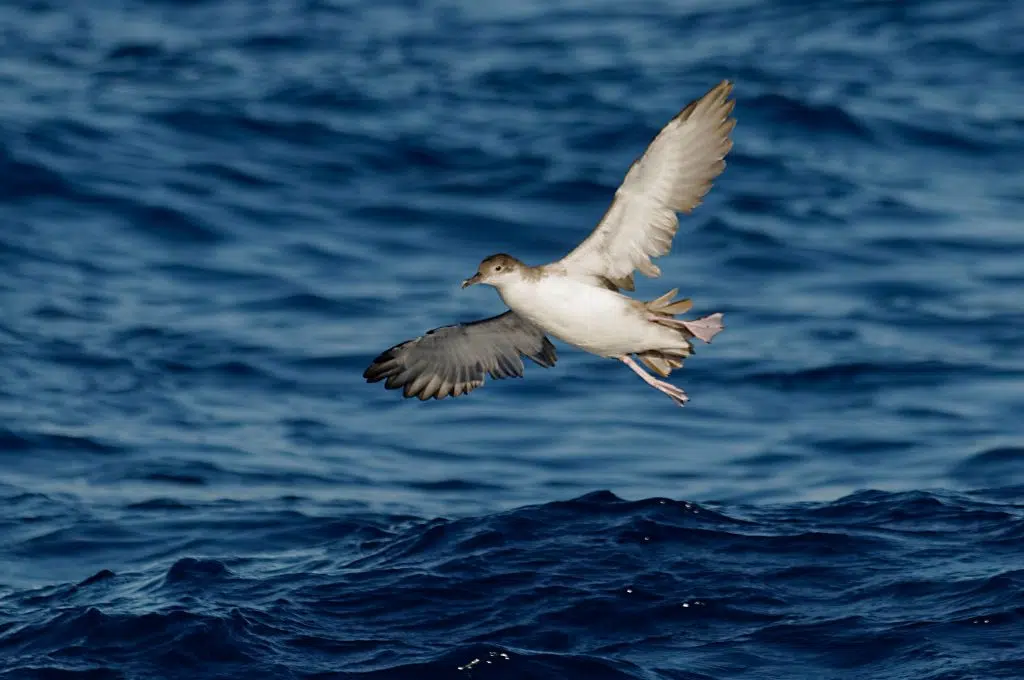The alarming decline of our European seabirds

New report shows that 32% of seabird species at European level are threatened with extinction.
A salty breeze, a piercing gaze scanning across the glittery surface of the sea for a fishy wiggle.
When Yelkouan Shearwaters (Puffinus yelkouan) hunt, they are fast, sharp predators, spiking into the glazing water surface to get the catch of the day. They love small fish and squid, dive as deep as 30m, and fly long distances across open water to find their prey. But their long journeys are most likely ending sooner than expected. Across their travels, Yelkouan Shearwaters, and many other seabirds, come across different threats that end their naturally long lives sooner than necessary.
The newly published report by BirdLife Europe & Central Asia shows that the threats for seabirds are worsening every year. At the same time, seabird populations are in decline. Right now, 32% of Europe’s seabird species have an elevated risk of regional extinction, being listed as Near Threatened, Vulnerable, Endangered or Critically Endangered on the European Red List.
Seabirds play an important role in our marine ecosystems, by shaping marine and coastal ecological processes. They bring nutrients from pelagic areas to islands and reefs, contribute to the distribution of organic matter and their guano (excrement) acts as a fertiliser for terrestrial, intertidal[1] and subtidal[2] zones.
“Seabirds are usually long-lived species, with potentially long population response times,” reminds Claire Rutherford, co-author of the report, and Red List Assessor at BirdLife International. She adds, “Their current declines could reflect threats and imbalances that started decades ago, and once in decline, it can also take them a long time to recover.”
Europe is home to over 80 different seabird species and one of the richest and most important regions worldwide for them. It accounts for almost ¼ of the total number of seabird species globally and some species, like the Yelkouan Shearwater, can only be found in this part of the world. Its decline has been observed for several decades on various Mediterranean islands due to bycatch and predation by invasive mammals. Some endemic species occupy such a small breeding range and already have a small population size that the increasing threats could easily wipe out entire species.
The main threats for seabirds have been known for a long time. Overfishing, bycatch, invasive species, pollution, recreational activities, and the glooming effects of climate change are threatening seabirds simultaneously and at different stages of their lives. As many seabirds live long lives, their chances of encountering multiple threats are quite high. One of these many threats may ultimately be fatal for them.
But the good news is that we already know what can be done to minimise these threats. There are EU laws in place that, if implemented correctly, can help seabird populations recover. But this requires international cooperation and re-enforcement across the Member States.
“EU Member States can help seabirds thrive again, by adopting known solutions, such as technical and spatial-temporal mitigation measures to tackle seabird bycatch in fishing gears, or eradication and biosecurity actions to reduce predation by invasive alien species. In the Portuguese archipelago of Madeira, targeted conservation actions, like the construction of artificial nests, have contributed to the improvement of the short-term population trends of Zino’s and Desertas Petrels,” says Antonio Vulcano, co-author and Marine Conservation Officer at Birdlife Europe and Central Asia.
Good policies and regulations can help reverse these downward trends, but reinforcement and more cooperation across countries are needed. At the same time, monitoring schemes and data collection with improved mechanisms to reduce bycatch can benefit small-scale fishers. In preventing bycatch, their fishing gears can last longer, and fewer replacements are needed.
Claire Rutherford elaborates, “Change is essential if we want to keep our marine environments healthy, as their current use cannot be sustained in the long run. Member States should create policies that focus on the avoidance of existing and emerging threats before considering mitigation or compensation measures. It is also important to focus on the cumulative effects of several threats on seabird populations, rather than focussing on individual threats.”
Seabirds are not only an ally in maintaining sea life in equilibrium but, like other birds, they are also an indicator of how healthy our seas are. And our seas are not in a good state. For the Yelkouan Shearwater to continue its long journey across the sea, we need to act and reverse the increase and intensification of threats and stop the downward trend of declining seabird populations.
[1] An intertidal zone, is the area above water level at low tide and underwater at high tide; it is also sometimes referenced colloquially as “foreshore.”
[2] A subtidal zone is an area submerged most of the time, exposed briefly during extreme low tides, sometimes referred to as the shallower region of the sublittoral zone (zone permanently covered with seawater).
Cover picture: Labetaa Andre
You might as well be interested in:
 | Stichting BirdLife Europe gratefully acknowledges financial support from the European Commission. All content and opinions expressed on these pages are solely those of Stichting BirdLife Europe. The European Commission is not responsible for any use that may be made of the information it contains. |










